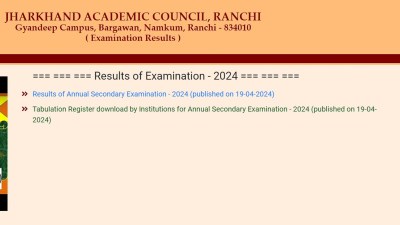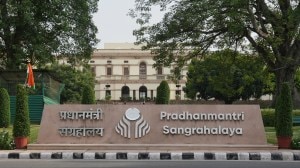- India
- International
Police records in Bihar show ways in which communal pot was kept boiling
In clashes since the BJP-JD(U) split, triggers show a trend: animal parts in places of worship, vandalism and revival of disputes long forgotten
 A police team on patrol in Baigni, Muzaffarpur, a daily routine since the clashes of May 21, 2014. (Source: Express photo by Appu Esthose Suresh)
A police team on patrol in Baigni, Muzaffarpur, a daily routine since the clashes of May 21, 2014. (Source: Express photo by Appu Esthose Suresh)
From throwing carcasses of animals in places of worship to digging up buried issues, police records in Bihar have listed a variety of ways in which communal tension appears to have been deliberately kept on the boil ever since the BJP-JD(U) ruling coalition split on June 18, 2013.
The Indian Express examined these records during a journey through 18 districts in western Bihar that witnessed nearly 70% of the “communal incidents” recorded since June 2013. And found four visible strands running through the 667 “communal incidents” recorded since June 2013:
The carcass: How 2 villages flared up in 11 days
Until the second half of 2013, Chakmajahid and Bhanpur Brewa, villages 40 minutes apart in Vaishali and with a significant Muslim presence, were not tagged by police as communally sensitive. Then, two incidents within 11 days changed everything.
On September 19 that year, the carcass of a pig was found inside a mosque under construction in Bhanpur Brewa, a hamlet of Muslims and Dalits (Vaishali has the highest density of Dalits in north Bihar at 20.68%).
On September 30, scores of Hindus and Muslims pelted stones at each other following an alleged incident of cow slaughter in the Yadav-dominated Chakmajahid.

The temperature rose again in Chakmajahid on July 31, 2014, when posters appeared on the wall of a mosque with this expletive-ridden line: “….. Kasai gai katna bandh karo” (Butchers stop killing cows). Incidentally, VHP leader Pravin Togadia was in Mahua, 5 km from Chakmajahid, on May 28, 2015, to address a rally organised by the Gau Pushtikaran Sanghathan.
Watch video:
App users click here to watch video
Mohammed Inulhaq, who is in his 80s and lives near the mosque in Bhanpur Brewa, said the discovery of the carcass was the first such incident of its kind in the village in his memory. “There was a lot of tension, but I broke that by asking police to remove the carcass and three feet of soil from that spot. The difficulty was in making others from the village understand,” he said. “This was the first time we (Hindus and Muslims) looked at each other with suspicion,” he added.
In Chakmajahid, Mohammed Avid, sitting on a charpoy outside his house opposite the mosque, recalled that the inflammatory posters “were all over the wall”. “We first saw them when we went for morning namaz. We informed the police after which senior officers came and pacified the crowd,” he said.
Since then, the daily roster of the Mahua police station contains the same opening entry: patrol Chakmajahid.
Postscript: The Moradabad riots in 1980, believed to have been the most violent in the state after 1947, were triggered after a pig was let loose inside a mosque. The Provincial Armed Constabulary refused to remove it, leading to clashes. Official records pegged the number of deaths at 400 although over 3,000 were unofficially tagged as dead.
The procession: 50m away, route was tweaked
Muzaffarpur’s Baigni village is separated from the nearest police station in Katra by a wobbly bamboo bridge over the Bagmati river and a 7-km dirt track. To reach Baigni, police cross the bridge on foot and get into a jeep outside a hut on the other side.
It was through this route that they rushed to the village on May 21, 2014, when the annual Mahaviri jhanda procession ended in the first “communal incident” here.
Read full investigation here: BIHAR SIMMERS BEFORE POLLS
According to police records, the procession was threading its way out of Baigni chowk towards the destination, or jhanda sthal, when the organisers revealed they were tweaking the route to move past the local mosque. The original route would have had the procession turn into a road 50 metres from the mosque. And the new twist ended in stone-throwing and violence.
According to police sources, the organisers had planned a repeat on May 21 this year for the procession coming from Darbhanga with “holy water” but were foiled by the district administration. “They insisted on taking the route next to the mosque but we did not allow it since they did not have the licence,” said a police source.
Today, patrolling in Baigni has become a permanent daily fixture on the police duty roster. Police sources said that “mobilisation around the Saraswati Puja and Mahavir jhanda processions have increased” in all the 18 districts that The Indian Express visited.
The defaced idol: A cut nose and country-made guns
Aurangabad’s Daudnagar, named after Daud Khan, the local general of Mughal emperor Aurangazeb, was one of the four spots in the state where a Hanuman idol was defaced the night before November 4, 2014. That 3-m idol, which stands on a one-foot-wide strip next to Ranji Prasad’s general store in Churi Bazar, is painted in dark red, so dark that it was almost invisible around 8 pm when The Indian Express reached the spot.
Also read: Bloodstains in temple, carcass in graveyard and processions of hate
“Around 4 am that day, some devotees found the idol’s nose missing. The suspicion fell on Muslims who had taken out a Muharram procession the previous night,” said Prasad. “The devotees questioned the Muslims and that led to violence involving country-made guns and bombs.”
Records at the Daudnagar police station match Prasad’s account and state that a curfew was imposed in Daudnagar for three days following the incident.
The graveyard: Dead disputes get new life
Apart from throwing carcasses in places of worship, tweaking procession routes and defacing idols, another method of inciting communal tension in Bihar has been the recent widening of existing fault lines.
Look at what happened in Phulwariya village, in Motihari’s Dhaka, near the Nepal border. Police records, endorsed by residents, state that an undercurrent of communal tension has existed here since 1957 when a dispute first arose over the presence of a small temple, or brahmasthan, in the middle of a kabristan (graveyard for Muslims).
Interview: Nothing to do with break-up, govt has lost control over police, says Sushil Modi
Hindus and Muslims have been offering prayers at the location without incident since the 1980s. Then April 26, 2015, happened.
That day, a 24-hour puja was organised at the brahmasthan as thanksgiving after a youth cleared the recruitment exam for a government job. This led to tension between the communities, with the district administration trying to defuse the situation by suggesting a permanent fence to separate the sites. But local MLA Pawan Jaiswal cited a 1957 court order to block the move.
The graveyard lies adjacent to the home of Jaiswal, who quit the JD(U) recently to join the BJP. “I did not want to take sides,” said Jaiswal. “All I said was there is a court order that says there should be no fencing. It should be decided by the elders of both communities. One side did not agree to my suggestions, I will not name that side. But I have averted at least 10 riots by pacifying the Hindu community in the last two years.”
Also read: Three-fold surge in ‘communal incidents’ in Bihar after BJP-JD(U) parted ways
Asked about the recent incident, Jaiswal said: “There was no communal riot, it was a minor incident. But there was definitely a political conspiracy to drag me into it so that my secular image is tarnished. Since I became an MLA, I have fenced 17 kabristans,” said Jaiswal.
If it was a 48-year-old dispute that was rekindled in Phulwariya, what’s been revived in Silaon, on the way to Rajgir in Nalanda, is a dispute that dates back to 1932. The tussle in Silaon, a village with less than 20% Muslims, involves a temple located in one corner of a four-acre graveyard. On January 11, 2015, Hindus living on the edge of the land clashed with Muslims who tried to avail a government scheme to fence the graveyard.
“We’ve never had an issue with our neighbours,” said Mohammed Sajad Alam of Silaon. “It is unfortunate. But I also understand that we have to live together.”
Mohan Kumar, another resident, suggested that the pot was still boiling. “Our road to the temple goes through the kabristan. How will we go there if they fence it? Why doesn’t the government think about Hindus?” he said.
Apr 19: Latest News
- 01
- 02
- 03
- 04
- 05






































